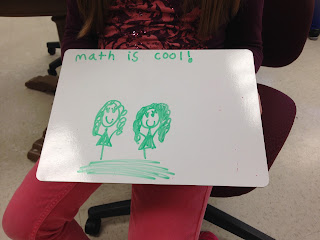WARNING: Finding Dory Spoilers in this post...but why haven't you seen it yet anyway???
As I was watching Finding Dory, next to some of my favorite summer schoolstudents buddies whom I randomly ran into at the theater, I was suddenly inspired. I'm not sure exactly what line triggered it for me, but I immediately began making connections to Carol Dweck's Mindset and to many of my students. Once I started I could not stop.
Marlin: Poor Marlin is the epitome of fixed mindset. He actively avoids opportunity for growth and does his best to keep his loved ones to follow suit. New adventures are simply an opportunity to fail. Now, this does not mean that Marlin is bad. He is doing what he does out of love and a lack of confidence, but if he never leaves the safety of the reef, he will never realize that he is capable of crossing the entire ocean...and more.
Nemo: Nemo is about as growth minded as you can get. He is ready to take chances and grow from every experience. He knows that he will make mistakes and need help, but he is willing to take those chances to grow. WWDD? (What would Dory do?)
Jenny & Charlie (Dory's parents): What great parents! I can only imagine how terrifying it would be for them. However, they did not give up. They adjusted their parenting tactics to find out what would help Dory learn the best. They provided her with visual and musical queues to trigger her memory and provide the needed support to allow her to grow. These two are great inspiration for educators and administrators.
Dory: Just keep swimming! ....enough said
I honestly could go on and on talking about Hank the octopus and Bailey the beluga and their fixed mindsets, as well as Destiny the whale shark who keeps trying no matter how many times she runs into that stinkin' wall. I will leave you with this thought. If we live in a mindset fearing our own failure as well as our students, how are we supposed to reach for the stars? (Sorry...I could not help one more Disney reference.)

As I was watching Finding Dory, next to some of my favorite summer school
Marlin: Poor Marlin is the epitome of fixed mindset. He actively avoids opportunity for growth and does his best to keep his loved ones to follow suit. New adventures are simply an opportunity to fail. Now, this does not mean that Marlin is bad. He is doing what he does out of love and a lack of confidence, but if he never leaves the safety of the reef, he will never realize that he is capable of crossing the entire ocean...and more.
Nemo: Nemo is about as growth minded as you can get. He is ready to take chances and grow from every experience. He knows that he will make mistakes and need help, but he is willing to take those chances to grow. WWDD? (What would Dory do?)
Jenny & Charlie (Dory's parents): What great parents! I can only imagine how terrifying it would be for them. However, they did not give up. They adjusted their parenting tactics to find out what would help Dory learn the best. They provided her with visual and musical queues to trigger her memory and provide the needed support to allow her to grow. These two are great inspiration for educators and administrators.
Dory: Just keep swimming! ....enough said
I honestly could go on and on talking about Hank the octopus and Bailey the beluga and their fixed mindsets, as well as Destiny the whale shark who keeps trying no matter how many times she runs into that stinkin' wall. I will leave you with this thought. If we live in a mindset fearing our own failure as well as our students, how are we supposed to reach for the stars? (Sorry...I could not help one more Disney reference.)




















